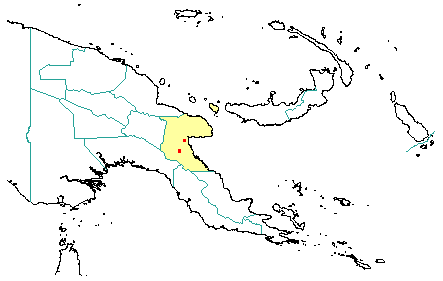
in PNGplants database
PNGTreesKey – Pinus caribaea Morelet |
Barry Conn (NSW) & Kipiro Damas (LAE).
Guide to trees of Papua New Guinea
Copyright held by the authors, National Herbarium of New South Wales, and Papua New Guinea National Herbarium
Revue Horticole de la Côte-d'Or Vol. 1: 107 (1851)
Other Literature: Blumea
Family: Pinaceae
Conifer
Timber Group: Softwood or Plantation species Tradename: Caribean Pine
Field Characters: Large canopy tree (15-30 m high) or Small sub-canopy tree; Bole cylindrical (28-40 cm diam.); straight (branching from near base); buttresses buttresses absent; spines spines absent; aerial roots aerial roots absent; stilt roots stilt roots absent; Bark rarely red, usually grey, or reddish brown, rough, fissured (strongly shed in large, flat sheets) or furrowed cork; Subrhytidome (under-bark) dark green or dark red; less than 25 mm thick, 15.0-20.0; bark blaze with two layers (outer layer of dead cork); strongly aromatic; resinous/linament-like or pine-like; outer blaze brown, with stripes (layers of cork), corky; inner blaze white or pale yellow, markings absent, usually smooth or less often fibrous; bark exudate (sap) present, colourless, not readily flowing (spotty) (flowing after some time), colour not changing on exposure to air, sticky; terminal buds not enclosed by leaves.
Indumentum: Complex hairs absent; stinging hairs absent; mature twig indumentum (hairs) present (scaley), hairs dense.
Leaves: Leaves clustered at end of branches (with persistent basal sheath), whorled (with more than two leaves at one node of a branchlet), (2-) (with a persistent basal sheath c. 12 mm long) 3-4 (-5), simple (a leaf composed of a single blade); petiole absent; leaves equally broad throughout much of length (linear), 12.0-18.0 cm, usually 0.1-0.3 cm; symmetric, finely crenate, not dissected or lobed, acute (shortly), venation parallel-veined, secondary veins closed, not prominent, but visible, intramarginal veins absent (usually with 3 or 4 internal resin canals touching endodermis - view in cross-section); leaves lower surface pale green, upper surface pale green, indumentum (hairs) absent; absent; domatia absent; stipules absent.
Flowers: Inflorescence terminal or axillary, flowers on an unbranched axis, flowers arranged in a cone (strobilus) (male flowers in narrowly cylindrical strobili, strobili in clusters around base of young shoots); flowers unisexual, unisexual with male and female flowers on the same plant, not stalked, flowers with one plane of symmetry; perianth absent; stamens 1, absent, free of each other; ovary superior, carpels separate (when more than one), locules 2; styles absent.
Fruits: Infrutescence arranged on unbranched axis, arrangement of fruits present, cone 90.0-(broadest below middle)-120.0 mm, 40.0-50.0 mm, brown; seeds 100 (2 per scale), much more than 10 mm long (12-16 mm long), winged (wing up to 25 mm long, usually persistent), narrow (longer than wide) (3-angled, usually mottled grey or light brown), seed 1-10 mm diam. (c. 3 mm diam.).
Distribution: Morobe (Plantation species).
 | Botanical records in PNGplants database |